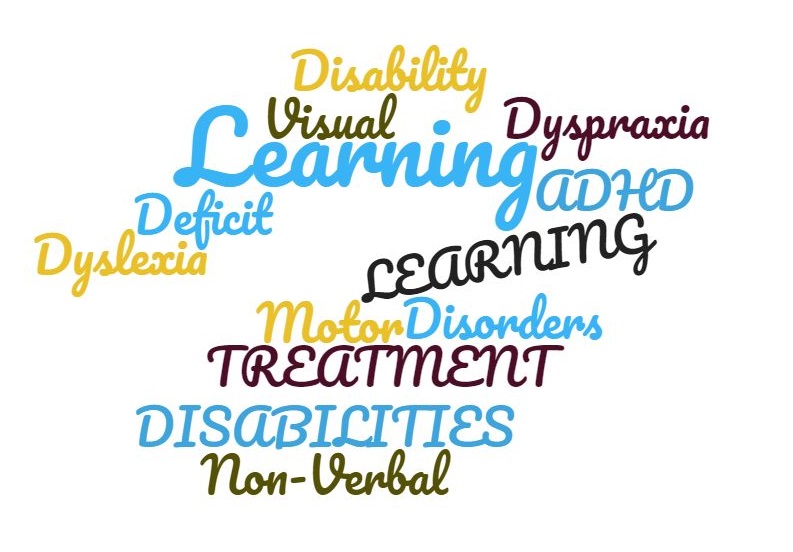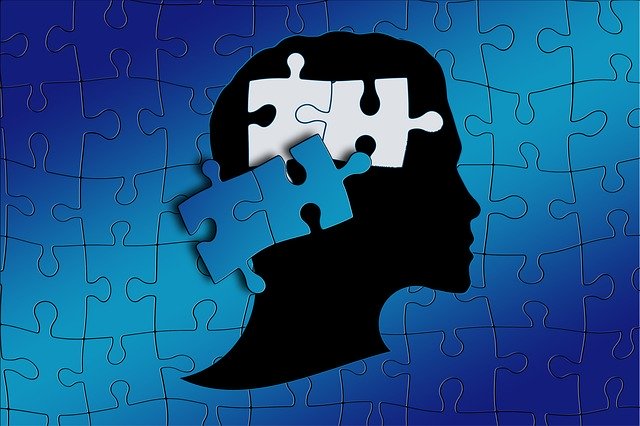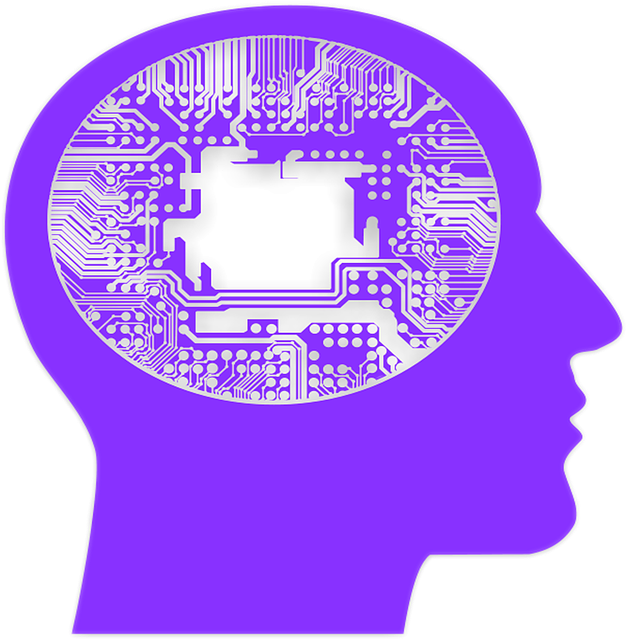Learning Disorders
By -: Bhumi Singh

Learning Disabilities refer to the problems that are faced by individuals especially found in children during their school time while learning. Learning Disorders are also characterized as childhood disorders which creates trouble among children in many activities such as writing, reading, etc. but these children have a normal level of intelligence in them. Thus, it is not considered as a problem with intelligence or motivation neither kids with a learning disability are dumb or lazy, it can be simply said that these children have difficulties in one or more areas of their learning but it is not affecting their intelligence or motivation. It has also been observed in many types of research that most children with learning disorders are as smart as other children, only their brains are wired differently which affects their way of receiving and processing information. Many children are found who struggle in schools with few topics or skills. Learning disorders can be seen/observed when a child tries very hard with a specific set of skills and still struggles then it can be said that the child is suffering from a learning disorder. A learning disability is also known as a learning problem.
In some recent cases learning disabilities are seen as lifelong conditions that affect many parts of person’s life such as work or daily routines, friendships, play, family life etc. it has also been seen that many people have only one isolated learning problem that impacts somehow in their life while in some people there may be many overlapping learning disabilities that can be apparent. Some of the researches say that if the learning disability is discovered in a child’s learning in an early stage and the child is provided with the right kind of help, the child is growing with the required skills that are needed to have a successful and fruitful life. “A current research that has been done by a National Institute of health study tells us that 67% of little students who were at risk of reading difficulties, these students were provided within an early stage and after that improvement was observed in students, they became average or above average.”
Learning disorders at different age groups among children
- Pre-school -: Children who have learning disorder in the pre-school face following problems-:
- They speak later than other children of their age group.
- They are also seen as facing pronunciation problems.
- Their vocabulary growth is observed as slow and is unable to find the correct words.
- They are also seen facing difficulties rhyming words.
- They are easily distracted and are very restless
- These children also get trouble in interacting with their friends, learning numbers, alphabets, colors, days of the week, shapes, etc.
- They’re fine motor development is seen as slow.
- Grade K-4 -: Children with learning disabilities from grade K-4 face the following problems-:
- They are slow in learning the connection between sounds and letters.
- They often get confused with basic words such as run, eat, etc.
- They also are seen as making consistent spelling and reading errors such as inversion (m / w), letter reversals (b / d), transpositions (felt/left), and substitutions (house/home).
- They are slow in learning new skills.
- They rely a lot on memorization and also slow in remembering the facts.
- They are not able to hold a pencil properly.
- They are also seen facing difficulty in learning about time and difficulties in planning.
- They are impulsive also have poor coordination, unknown to their physical surroundings.
- They are also prone to accidents.
- Grade 5-8 -: Children with a learning disorder in grade 5-8 face the following problems-:
- They have been observed reversing letter sequences such as (left / felt).
- They avoid doing the loud reading, face difficulties with handwriting, so they are seen as avoiding writing assignments.
- They face a lot of difficulty in making new friends and are also slow in recalling the facts.
- High school students and adults -: Children in high school and adults face the following problems-:
- They have been observed as facing difficulties in summarizing the things, are slow in working, misread information.
- They either focus too much on the details or pay no attention to the details.
- They avoid tasks related to reading and learning.
- They also face difficulties in adjusting to new settings.
TYPES OF LEARNING DISABILITIES -:

Dyslexia -: Dyslexia is made up of two words “Dys” which means difficulty with and “Lexia” which means words; therefore, dyslexia means difficulty with words. It is one of the most common forms of learning disability among children. This is a language-based disability in which the person faces difficulty in understanding words sentences or paragraphs. These people face difficulty in processing and understanding words, sentences or paragraphs. These people face difficulty in processing or understanding the things they hear read. But many people who face dyslexia are talented in art and music, 3D visual perception, athletic and mechanical ability.

Dyscalculia -: Dyscalculia is made up of combining two words i.e. “Dys” which means “difficulty with and calculi which means “calculations and mathematics” therefore it means difficulty with calculations and mathematics. It is one of the life-long learning disabilities which affect the ability to solve math concepts and the ability to grasp. They face difficulties in holding the pencil and also face problems in manipulating numbers in their head and also are not able to remember the steps in formula and equations.
Dysgraphia -: This is the learning disability in writing. This disorder affects a person’s handwriting and fine motor skills. It basically refers to physical difficulty forming words and letters.
Symptoms -:
- Neatness and consistency pf writing.
- Spelling consistency
- Writing organization and coherence
- Accuracy copying letters and words.
Dyspraxia -: It affects the development of motor skills. The affected person faces problems in planning and executing fine motor tasks that range from getting dressed to waving goodbye. It’s a lifelong disorder that has no cure but there are many options that are available for improving the ability to function and become independent.
ADHD -: This disorder is generally found in children of primary school; it causes them to lose focus on tasks very easily. It is of two types-:
- Hyperactive -: Impulsive ADHD, it is distinguished by the persons the excessive amount of activity. It includes trouble in controlling with temper, constant fidgeting, problems with doing quite activities, non-stop talking, fidgeting, and many more.
Inattentive ADHD -: People with this disorder face difficulties in paying attention to instructions given them, they daydream a lot, process information slowly, they are very poorly organized, and also, they become bored easily.
Its not a learning disorder but can cause the person to face problems with learning and is also seen as linked to other learning disabilities.
Language Processing Disorder -: It is a type of Auditory Processing Disorder (APD) that affects the understanding of all sounds coming into the brain. The person faces problems in attaching meaning to sounds, sentences, and stories.
Signs and Symptoms-:
- They face problems in labeling objects or recognizing labels.
- They also face problems in getting jokes.
- Their reading comprehension are also found to be poor.
- They are good in describing objects and even can draw it but they are not able to think of the word for it.
- They also have poor written output.
Non -Verbal Learning Disability -: It is characterized by a remarkable discrepancy between higher verbal skills and weaker motor, visual-spatial, and social skills.
Signs and Symptoms -:
- They are able to make very literal translations.
- They face problems in following multi-step instructions.
- They also face problems with changes in routing and transition, and many more symptoms are found.
Visual Motor Deficit -: This is a kind of disorder that affects the interpretation of information that a person sees and the ability to draw or copy also gets affected by a person. It may result in the difficulties of missing subtle differences in shapes or printed letters, holding pencil too tightly, poor co-ordination of eye/hand.
TREATMENT OF LEARNING DISABILITIES -:
- Special education services -: Children who are diagnosed with learning disabilities can qualify for special education services in most of states or territories. Educational laws provide these children the same opportunity that is provided to children without learning disorders through their special education services.
- Interventions -:
- For the children having learning disability with impairment in reading-:
- Special teaching techniques-: This technique helps the child to learn through multisensory experiences and by providing immediate feedback so that child’s ability to recognize words that can be strengthened.
- Classroom Modification-: In this teacher help the child by providing extra time in completing the tasks and should provide the child recorded tests that allow the child to hear the questions instead of writing them.
- Use of technology-: These children can be provided with learning to books on tape on using word-processing with spell-check feature in it.
- Dysgraphia -:
- Special tools-: in this technique, teachers have an important role to play by offering the students oral exams, providing a note-taker, or allow the child to videotape reports, instead of writing them.
- Use of Technology-: A child who is suffering from dysgraphia could be taught to use word-processing programs and should be given the audio recorder instead of writing by hand.
- Reducing the need for writing-: Teachers can provide the students with notes, preprinted study sheets etc.
- Dyscalculia -:
- Visual Techniques-: Teachers can use this technique by drawing word problems and teaching the students how to use colored pencils in those pictures.
- Memory Aid-: Music and rhymes can be helpful for the child in remembering math concepts.
- Computer-: Computer can be used for children for different drills and practices.
- Therapy -: Many children get benefits from therapy. Occupation therapy has been seen as the most effective one, It improves the motor skills of a child who is having writing problems. A speech-language therapist can help address language skills.
- Medication -: Doctors may recommend medication to manage severe anxiety or depression. Medications for ADHD (Attention-Deficit/ Hyperactivity Disorder) may be helpful in improving a child’s ability to concentrate in schools.
- Complementary and alternative medicine -: Furthermore research is required in this area to alternate the treatments, for e.g. -: dietary changes, eye exercises, use of vitamins, neurofeedback and also the use of technological devices
- Extra Help -: Trained professionals can teach techniques to the child to improve her or his organizational, academic, and study skills.
- Paying Attention to a child’s mood -: Learning disorder might be bad for a child’s self-esteem, therefore keeping an eye out for symptoms of depression-like changes in sleep, loss of interest, moodiness in their usual activities.
Therefore, if the child is facing any such difficulty, he /she should be taken care of in the early stages especially if it is detected in the primary classes, s/he should be taken to the psychologist for the treatment of the child. These disorders can not be fully cured but if brought into notice the lives of affected children can be improved